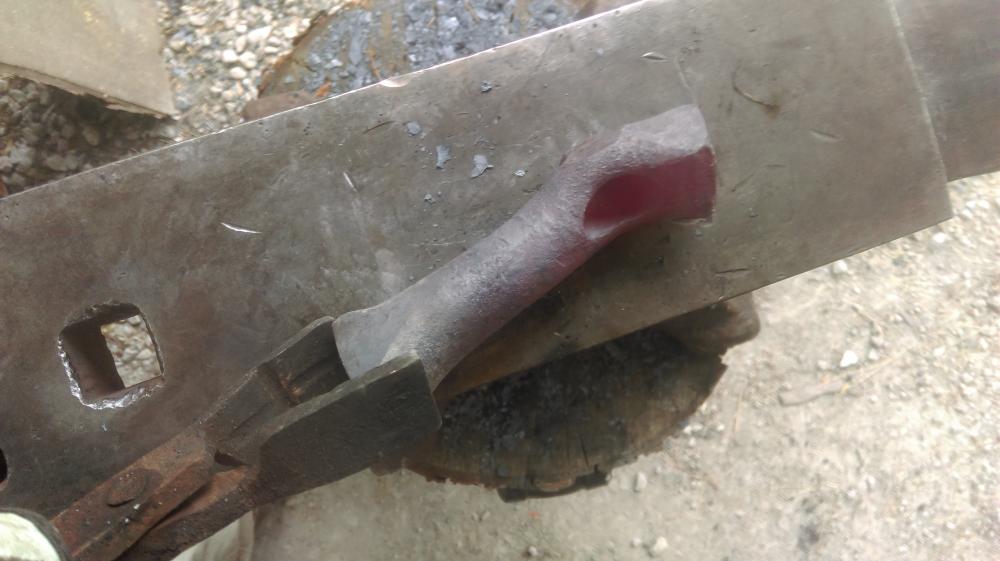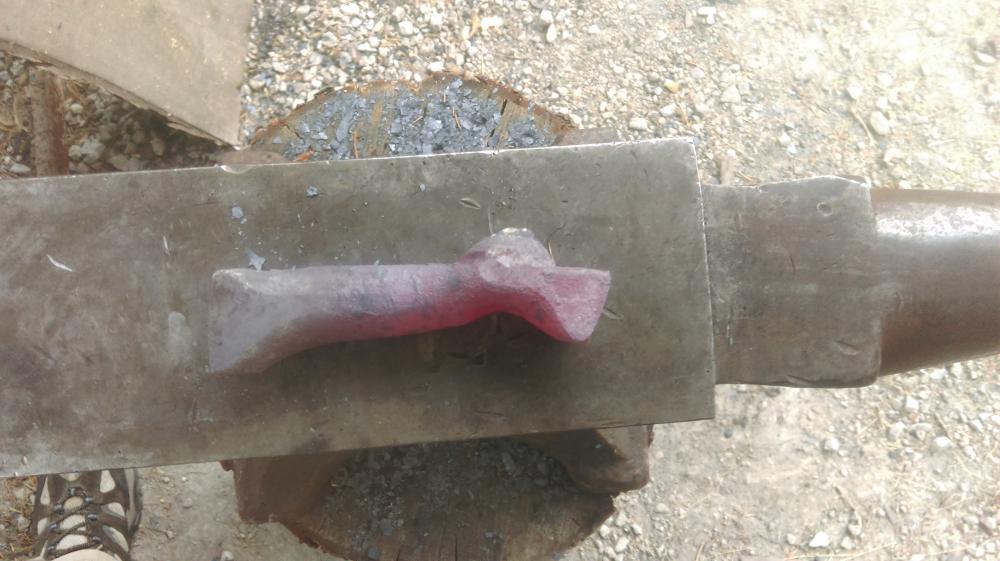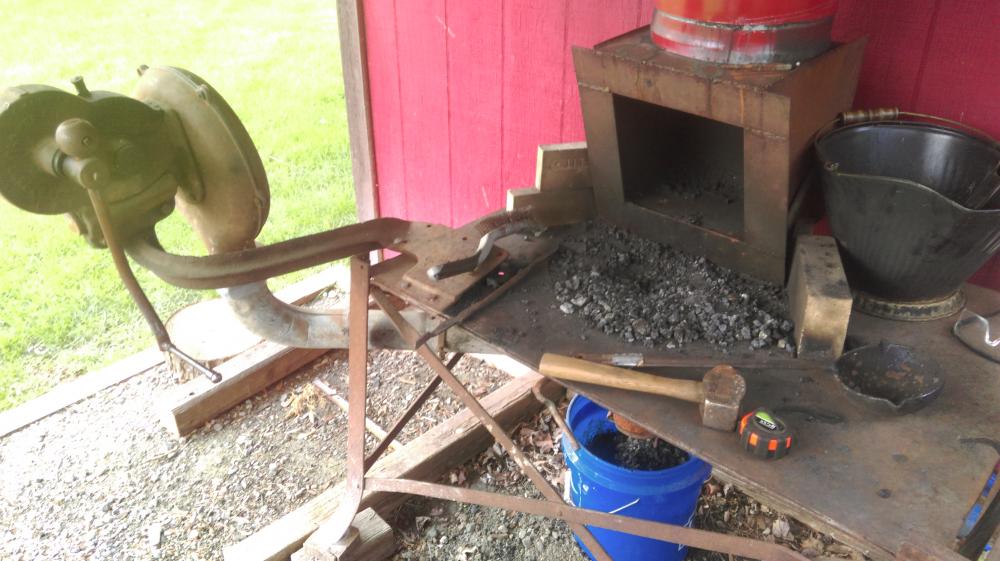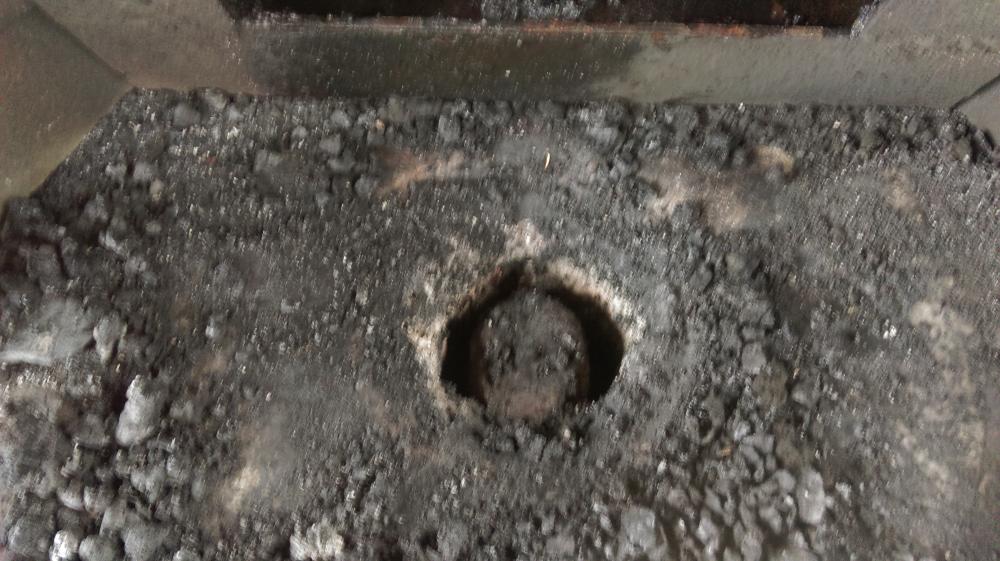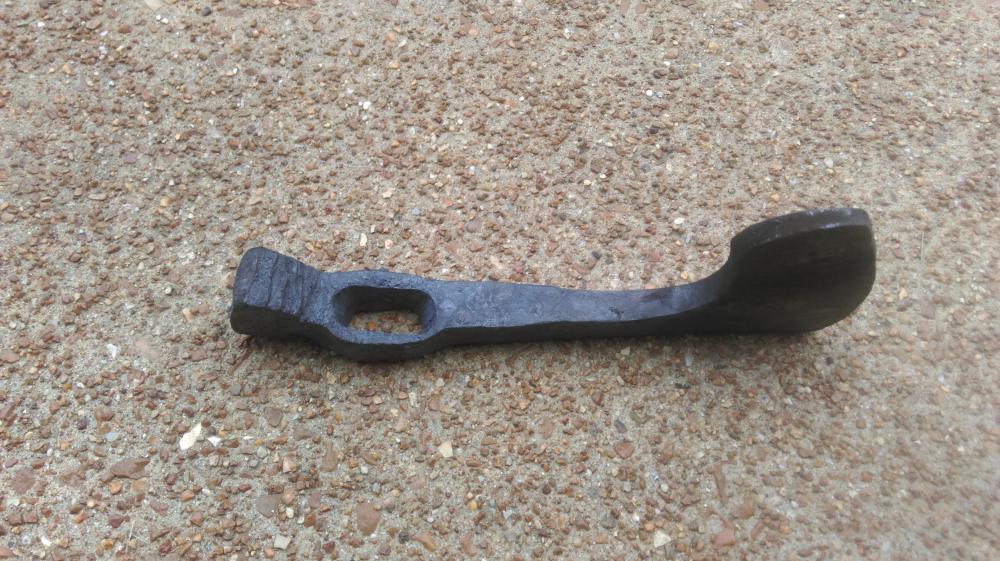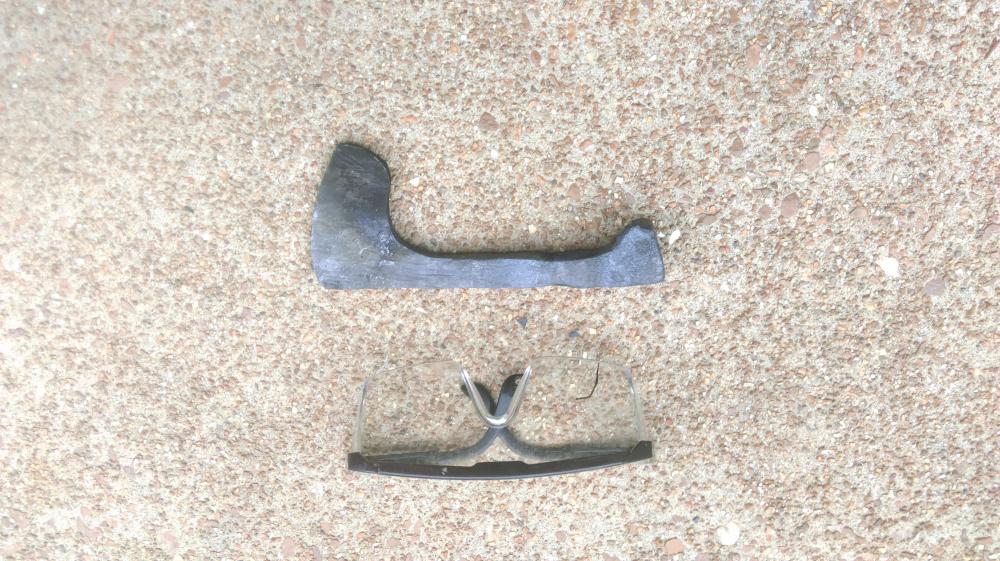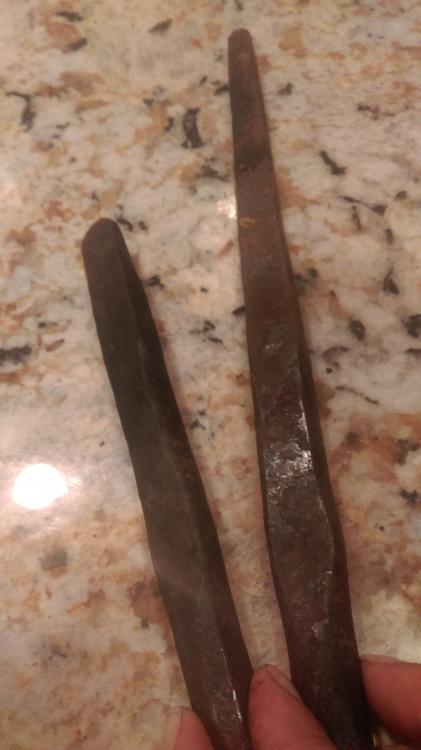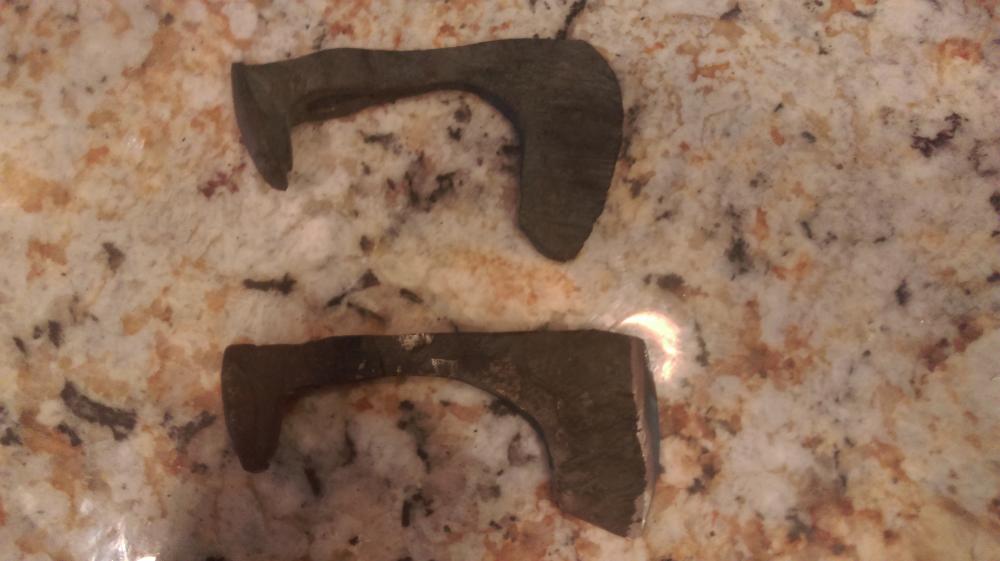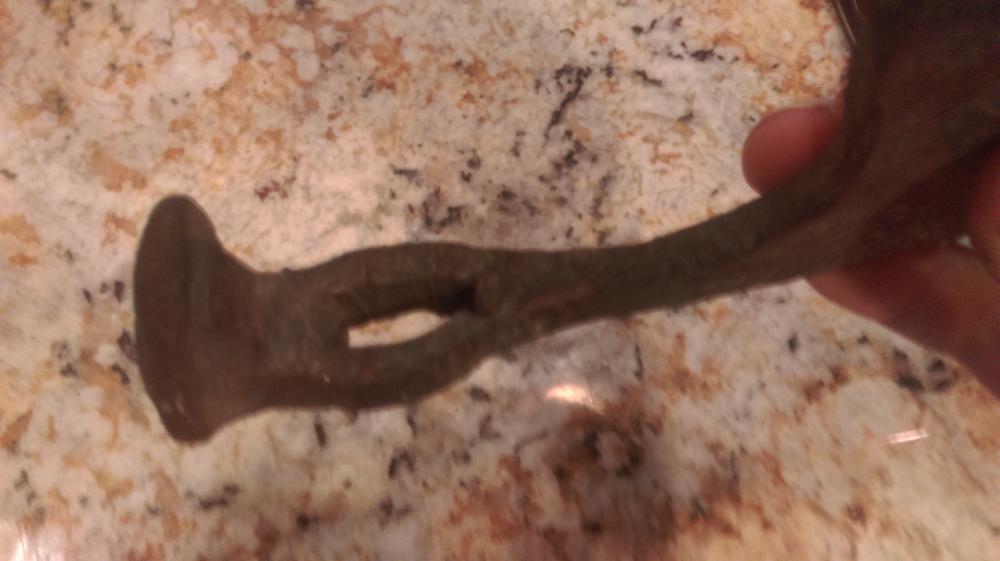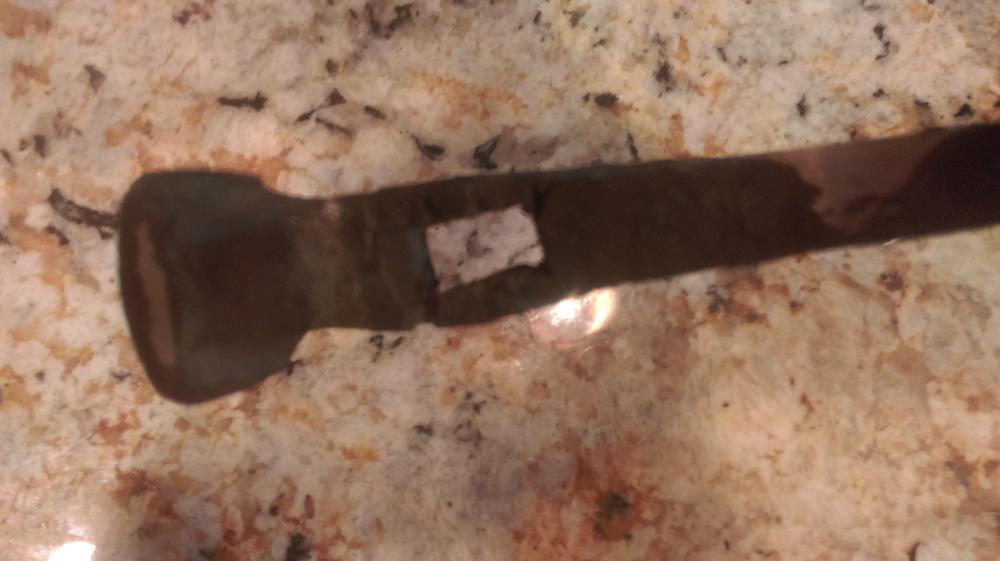
Anthony Karakas
Members-
Posts
20 -
Joined
-
Last visited
Content Type
Profiles
Forums
Articles
Gallery
Downloads
Events
Everything posted by Anthony Karakas
-
Just a quick update: i followed everyone's advice and easily punched through on some 7/8" stock. The big difference was using a dedicated punch (instead of the drift) and then flipping the piece over and punching out the pellet. If only i had it centered! Came out a little lopsided, but the lesson has been learned! Big thanks for all your help everyone!
-
Thanks Tdriack, on my next attempt i will drift it from one side, and then when i am close to the other side, i will flip it and punch from the bottom. The funny thing is, i used to do it that way! My problem is i've taken a few long layoffs from the forge, and i forgot about flipping the piece and punching from the bottom! So simple in hindsight, i am shocked i forgot such basic technique.. I am using the tomahawk mandrel from Kayne & Son. However, i am realizing that a perhaps a mandrel is not a slitter, or a punch...Should i be using one of those first to make the hole? And then later come thru with the mandrel?
-
Hello, I am curious as to what types of steel people are using to make a serviceable hawk without forge welding a high carbon bit. Further, are you able to do a home heat treat, or do you send it out for heat treat? Conversely, do some of you prefer to forge a bit into a mild steel body? Thank you, Anthony
-
Thank you all very much! I will get some bricks going and build it up!
-
I bought this forge one year ago. It is my first one. It has a clinker breaker, as seen in the photo. I've been using the forge, but i never use the clinker breaker. Now i am wondering if it blocks too much air and causes a cold spot in the middle of the fire pit? I also notice that sometimes coal just falls straight through the gaps. Should i be using the clinker breaker? Or is it minimizing air flow and hence heat? I would like to get more heat and spin the blower less. Thank you
-
Struggling with tomahawks
Anthony Karakas replied to Anthony Karakas's topic in Axes, Hatchets, Hawks, Choppers, etc
After rounding over the edges of my punch and drift, and making sure that i only worked the steel in the orange and above range, i am happy to report that this eye did not crack! Unfortunately i was not perfectly center (although it certainly seemed so when i started punching). -
Struggling with tomahawks
Anthony Karakas replied to Anthony Karakas's topic in Axes, Hatchets, Hawks, Choppers, etc
Actually Navasky, i was doing just that on my latest attempt. I ran out of rr spikes, so i used a piece of 3/4 tool steel. After upsetting the piece to 4" (from 6.5") i punched and drifted the eye. Later as i was working on the body of the hawk, i started quenching the lower part of the hawk where the eye was located, under the belief that if i kept it cooler, it would not split or crack. Unfortunately it did just that! -
Struggling with tomahawks
Anthony Karakas replied to Anthony Karakas's topic in Axes, Hatchets, Hawks, Choppers, etc
Daswulf and Nick, thank you both very much for the advice! I will file those sharp edges off and round them over. I never want to see a cracked eye again! -
Struggling with tomahawks
Anthony Karakas replied to Anthony Karakas's topic in Axes, Hatchets, Hawks, Choppers, etc
Here is a picture of the two tools that i used...Also, perhaps i did not make myself clear: the cracks did not happen while i was drifting the eyes. I noticed them later on after i had been forging the rest of the tomahawk. For that reason, i am wondering if it is better to do as much forging as possible of the Hawk, and then drift the eye as late as possible in the forging process? -
Hello, These are some of my first tomahawk attempts. I keep having a recurring problem, which is the eyes keep cracking. I have been drifting the eyes early in the process, but now i am realizing, is it better to drift the eyes later in the forging process, thereby reducing eye damage during forging? Also, i am welcome to any and all advice that might help me along my way to producing a serviceable hawk. Thank you.
